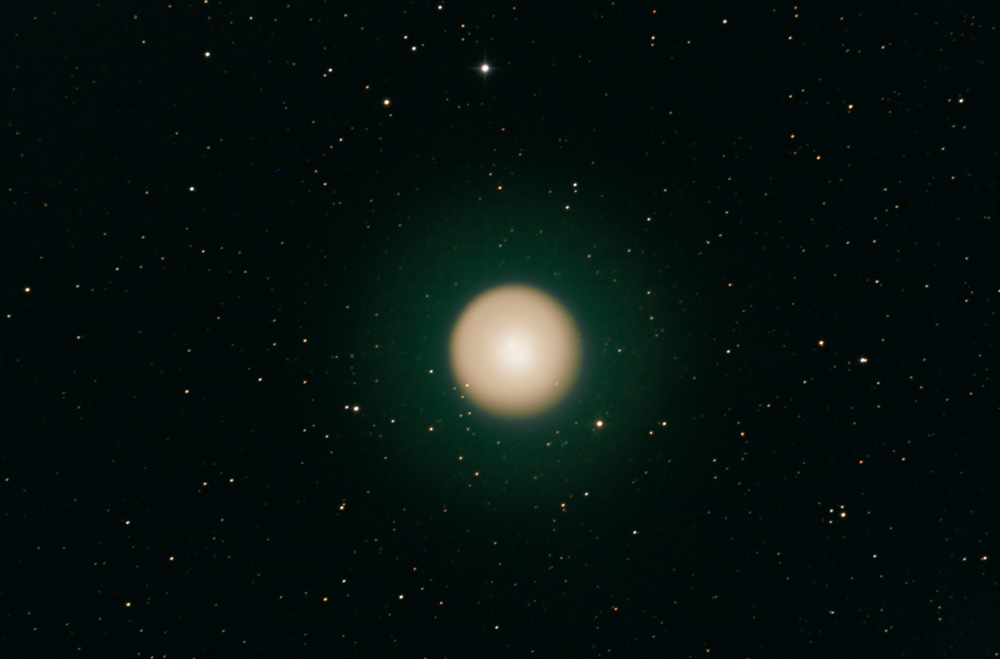 |
Comet 17P/Holmes - Exploding Comet
 |
Copyright 2007 Hap Griffin
The extraordinary comet 17P/Holmes from Monday, October 29th. The previous week, this comet had been invisible...but burst forth brightening nearly a million times in less than 24 hours. The cause is unknown, but is theorized to have been caused by a collapse of hollow areas in the icy nucleus (seen here as a bright speck just to the upper right of center) causing a huge amount of ice to immediately sublimate into a gas cloud. The major portion of the cloud appears yellowish in binoculars and can be seen here to posses a dark circumferential band which might be an indicator of a slowing of the outgassing at some point. Also visible here is a faint greenish outer cloud. Although a traditional tail is not visible because of the comet's large distance from the sun (between the orbits of Mars and Jupiter), the comet is obviously asymmetrical with a bright triangular region extending from the nucleus to the lower right and the outer edge of the main gas cloud at the lower right being noticeably more diffuse than on the opposite side. Longer exposure photographs show several very faint bluish tentacles emanating from the lower right quadrant as well.
The stars are a
bit elongated in this photo since the comet was moving slowly as the twenty
10-second exposures were captured.
Date/Location:
October 29, 2007 Griffin/Hunter II Observatory Bethune, SC
Instrument: Canon 40D (modified IR filtering) Digital SLR through
10" Newtonian w/MPCC
Focal Ratio: f/ 4.7
Guiding: None
Conditions: Visually clear
Weather: 50 F
Exposure: 200 seconds total (20 x 10 seconds @ ISO 800)
Filters: Baader UV/IR block internal to camera
Processing: Focused and captured with DSLR ControlPro, RAW to TIFF conversion,
flat frame calibration, Digital Development, resizing and JPEG conversion in ImagesPlus. Color correction in Photoshop
CS2. Noise reduction in Neat Image.